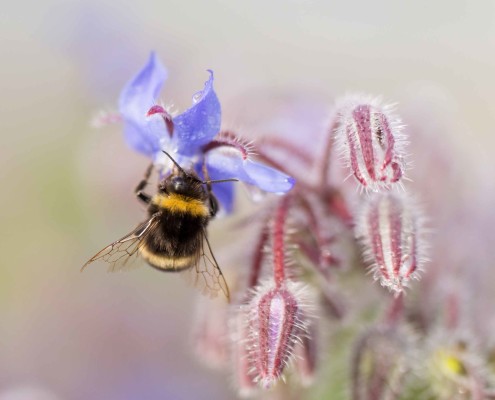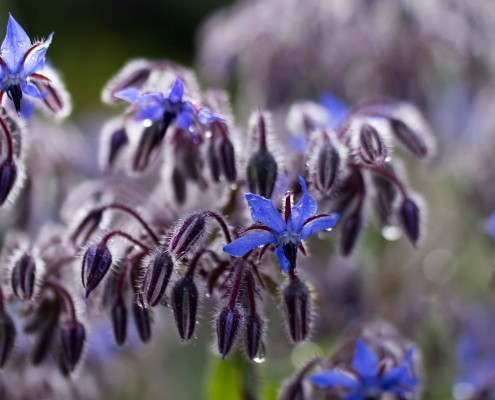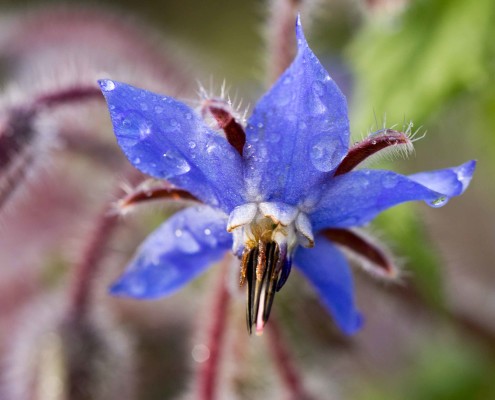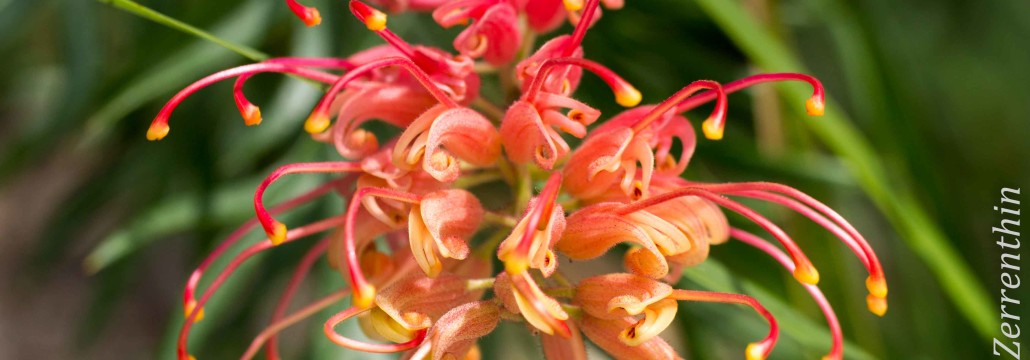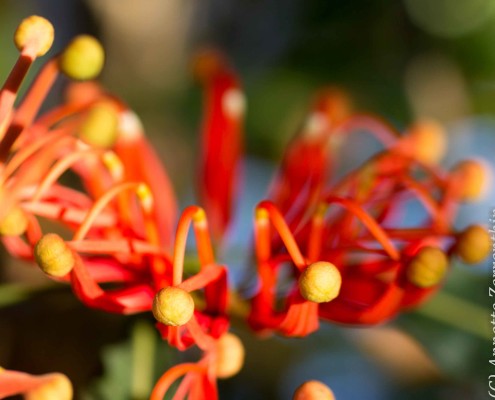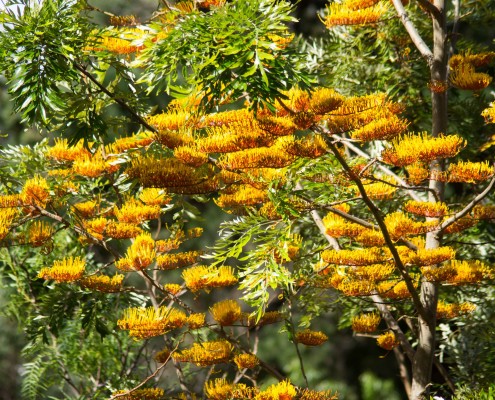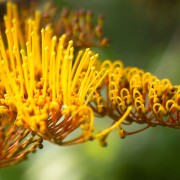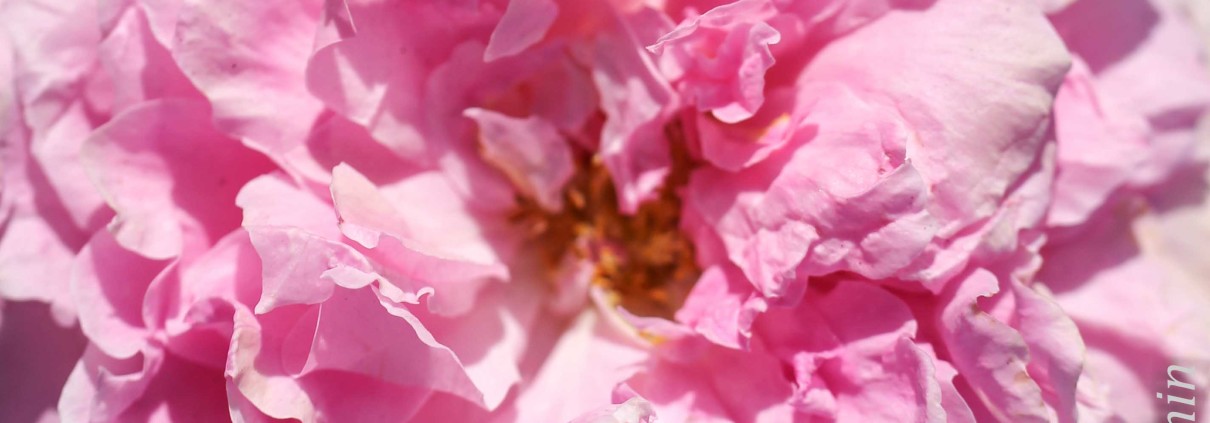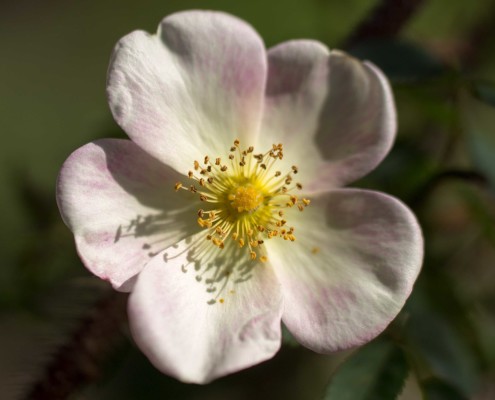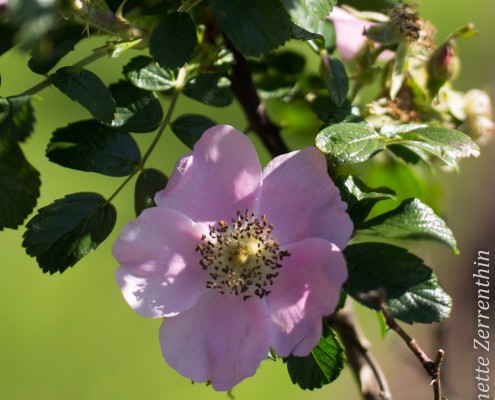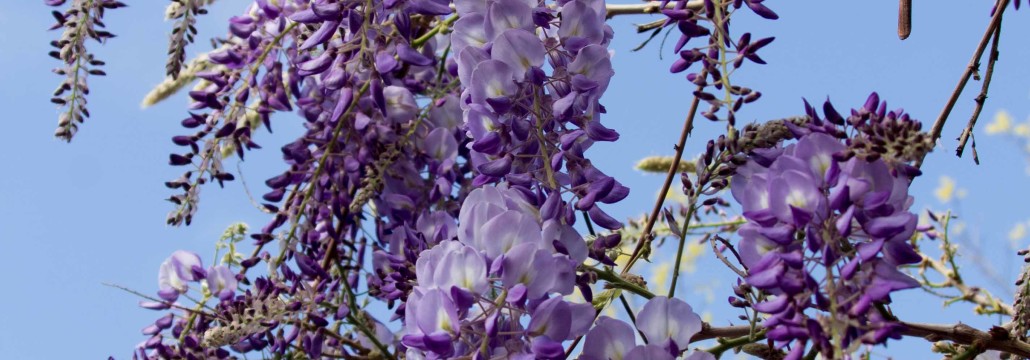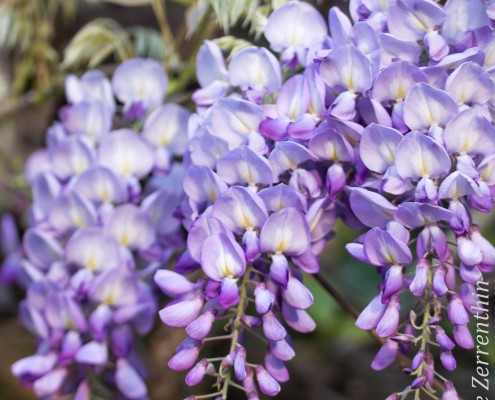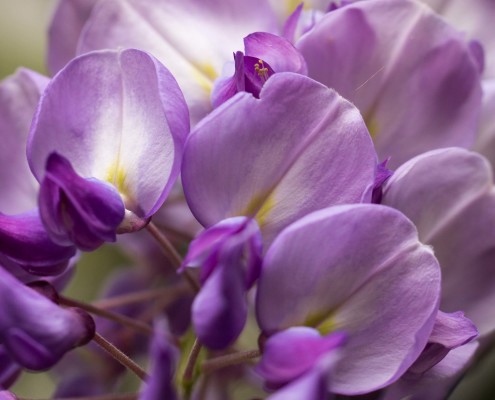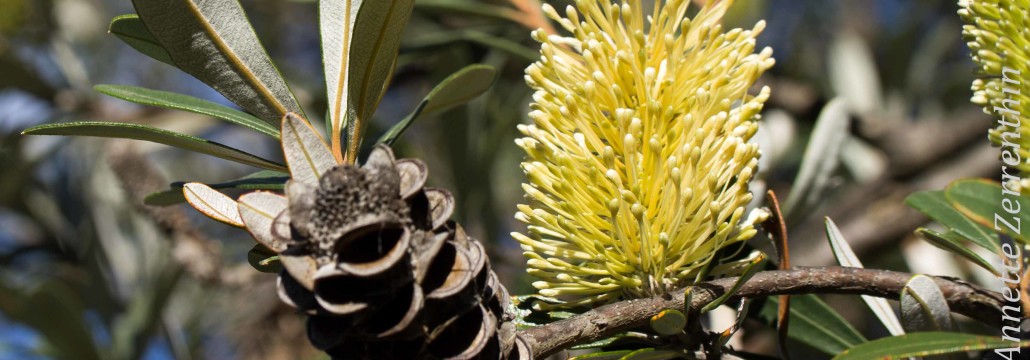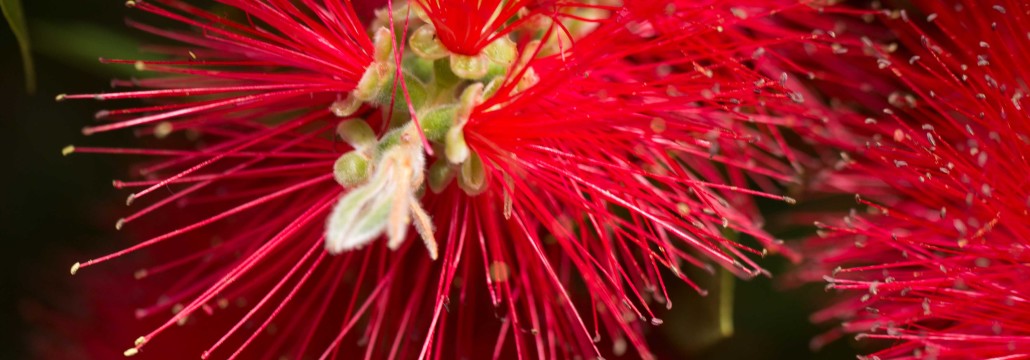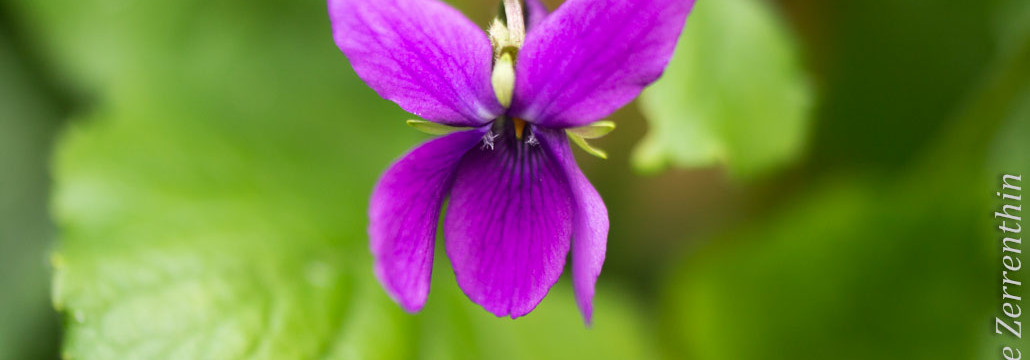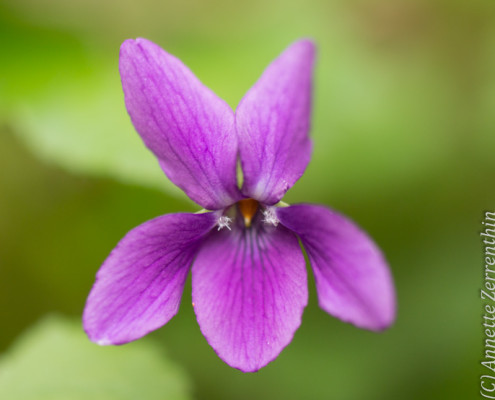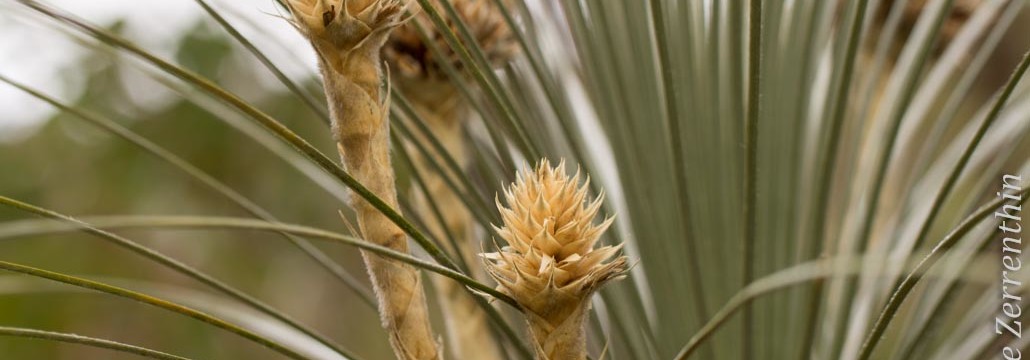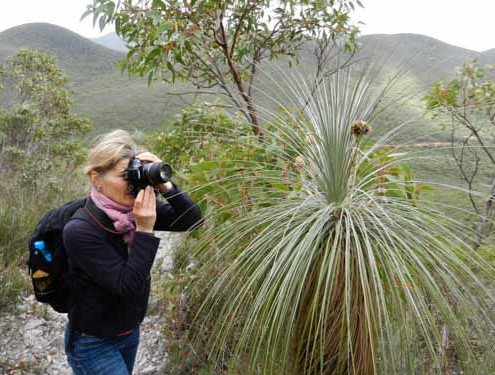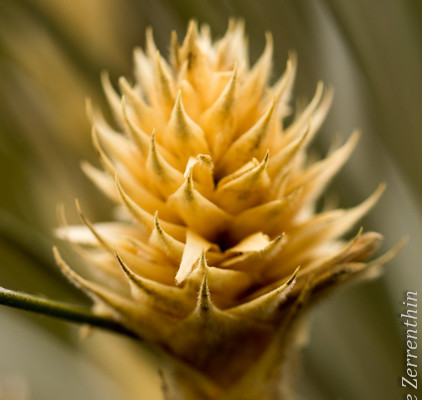Prickly Pear Cactus – It’s all about Adaptability
Living in Australia, I don’t normally get to write about cacti. The other day when cycling past the train line near the Prahran Market, here they were (!), the bright yellow flowers of Prickly Pear Cactus. Mind you, I’ve been living in the area for many years now but have never noticed the cactus growing there before. When the striking flowers caught my eye, I knew that I’d find a reference for Prickly Pear Cactus amongst the Desert Alchemy essences.
Native to the Americas Prickly Pear Cactus Oputina is a genus of about 200 species and is also known under the names of Paddle Cactus or Nopales. They are one of the hardiest succulents and therefore survive cold weather better than other cacti, so have adapted to locations with colder climates. They have two kinds of spines, large smooth fixed spines and hairlike prickles, called glochids, who penetrate the skin and then detach from the plant easily.
In Australia, Prickly Pear Cactus has been introduced by the early settlers of Australia according to Wikipedia.
‘The first introduction of prickly-pear into Australia can be definitely ascribed to Governor Philip and the earliest colonists in the year 1788. Brought from Brazil to Sydney, they remained in Sydney, New South Wales, where it was rediscovered in a farmer’s garden in 1839. The farmer’s wife gave cuttings to neighbors and friends, who planted it not only in their gardens but also as hedgerows. So began the Australian invasion that caused major ecological damage in the Eastern states.”
When writing about flowers and plants I am rarely prepared for what I find regarding their healing properties, so I was very surprised reading about the multitude of health benefits of various Prickly Pear species. All parts of the plant, flesh, flowers and fruit have nutritional and/or medicinal properties and is referred to as ‘natural healer of the desert’. Here is a brief overview of the health benefits:
- ability to treat type II diabetes
- reduce cholesterol
- the fruit juice has antioxidant properties
- studies are underway to confirm findings of anti-cancer benefits, especially ovarian, bladder and cervical cancer cells
- benefits for the prostate
- a 1996 study published in Antiviral Research by Ahmad et al has demonstrated antiviral properties of the Opuntia streptacantha species.
- rich in minerals, vitamins (E, C, B1, B6, Niacin) and other phytonutrients
- the fruit pulp is rich in potassium, magnesium and calcium.
Nutritionally, Prickly Pear Cactus contains most of the vitamins and minerals required for the body, though in small quantities. The young pads can be fried or prepared fresh for a salad. The fruit can be eaten or juiced. Here is a recipe for a sorbet made with the fruit including safe handling techniques to remove the spines.
If you’re very keen to find out more have a look at this comprehensive overview on medical and nutrition research published by Frontiers in Bioscience Vol 11 in 2006.
Given the plants ability to survive colder climates ‘Adaptability’ is the key word for the flower essence Prickly Pear Cactus Oputina phaecantha var. discata, available through the Desert Alchemy range. Adaptability, in terms of the adapting to life’s circumstances, going with the flow and stepping out of old patterns and behaviours.
“Set patterns, incapable of adaptability, of pliability, only offer a better cage. Truth is outside of all patterns.” ― Bruce Lee, Tao of Jeet Kune Do
I love the description of ‘active surrender to what is’ by essence maker Cynthia Anthina Kemp Scherer and she follows saying ‘It supports our awareness in being synchronous with the events in our lives. When we are in harmony, our actions don’t come before our feelings, and our thoughts don’t direct our actions. All of our actions are based upon an inner assessment that includes our feelings, our thoughts and our intuition.’
We’re cutting ourselves off from the universal interplay if we approach life with rigidity when anxiously trying to control outcomes from our mind. I know from my own experience that it takes incredible strength, trust and centredness to navigate life from a state of surrender especially when faced with difficulties – health, financial and/ or relationships. Having the ability and adaptability to be the flow of life allows us to engage ALL of the creative resources within ourselves and tap into the wealth of what IS at any given moment beyond our small view finder of seeing the world.
The ability of Prickly Pear Cactus, with its amazing wealth of health benefits, to adapt and survive in different environments shows us the possibility of living life within our fullest potential.
© 2014, Annette Zerrenthin
References: C. A. Kemp Scherer. The Alchemy of the Desert. Desert Alchemy Editions, 2003. Gardening Australia's Flora. ABC Books, 2013.


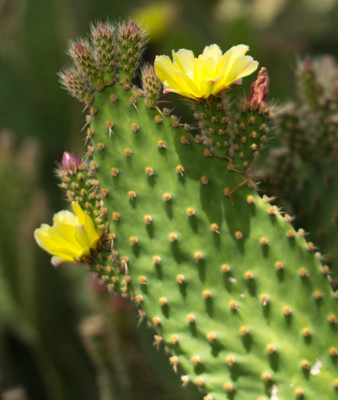
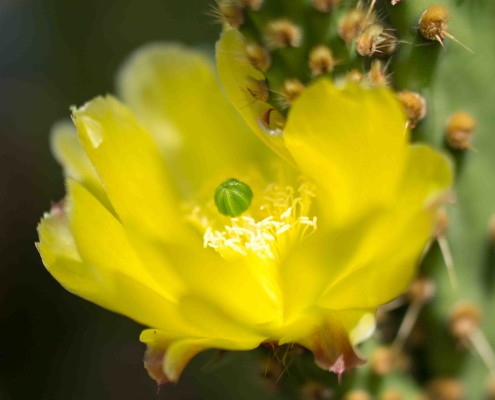
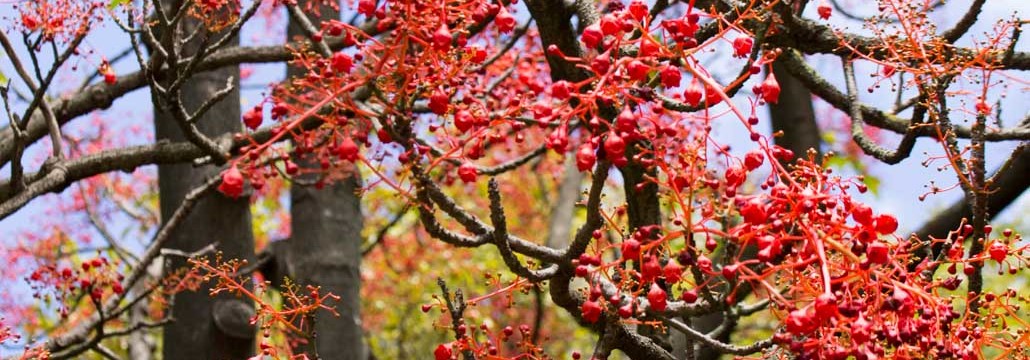
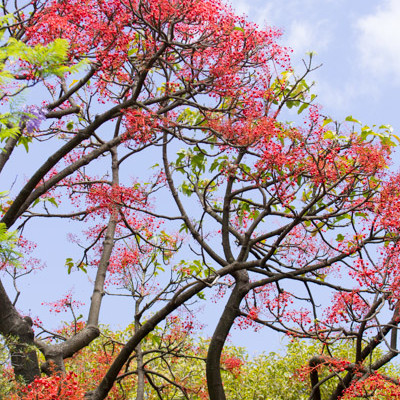

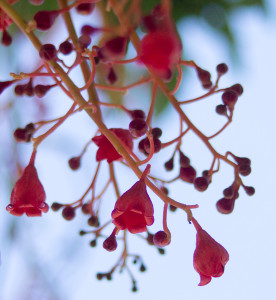
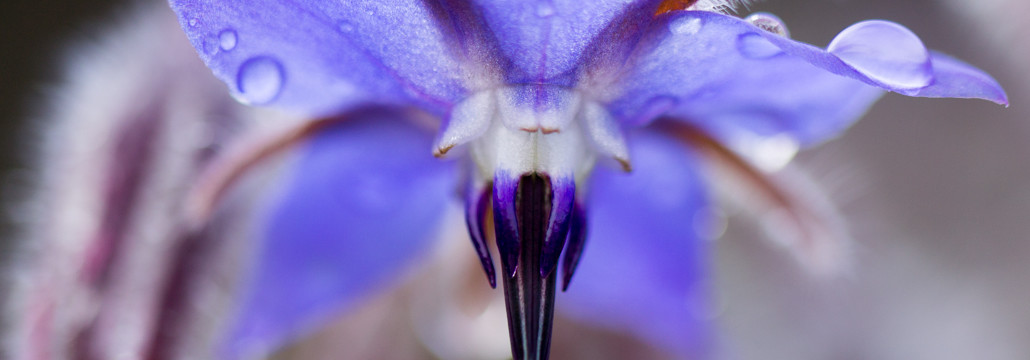 Annette Zerrenthin
Annette Zerrenthin